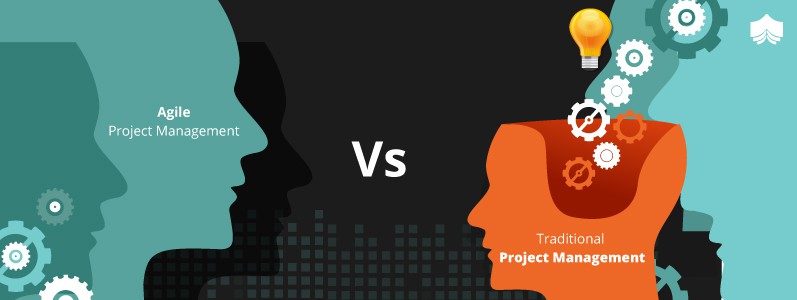Introduction:
Staying ahead of the curve is pivotal in the dynamic world of mechanical product design. Since 1998, Convergence Consulting has been a leader in integrated engineering services, championing innovative methodologies to streamline product development. This article delves into the Agile methodology, a game-changer in mechanical product design, contrasting it with classical project management approaches.
Agile Methodology: A Brief Overview
Initially conceived for software development, the Agile methodology has transcended its boundaries to revolutionize various sectors, including mechanical product design. This iterative approach emphasizes flexibility, team collaboration, and customer-centric design. Agile divides the project into manageable units, allowing for frequent reassessment and adaptation, a stark contrast to the linear and rigid structure of traditional methods.
Advantages of Agile in Mechanical Product Design
Enhanced Flexibility and Responsiveness: Agile methodology allows designers to adapt quickly to changes, be it customer requirements, market trends, or technological advancements. This flexibility ensures that the final product is relevant and ahead of its competition.
- Increased Collaboration and Communication: Agile promotes a collaborative workspace where cross-functional teams work in tandem, ensuring a harmonious integration of various aspects of product design. This synergy fosters innovation and enhances the quality of the final product.
- A customer-centric approach: By involving the customer throughout the development process, Agile ensures that the product aligns closely with the customer’s needs and expectations, leading to higher satisfaction and loyalty.
- Risk Mitigation and Quality Control: Regular reviews and iterations in the Agile methodology help identify and mitigate risks early, ensuring higher quality and reducing time to market.
Comparing Agile with Traditional Project Management
Traditional project management in mechanical product design often follows a ‘Waterfall’ model, a sequential and structured approach. While this method is effective for its predictability and straightforward planning, it lacks flexibility and adaptability.
Drawbacks of Traditional Project Management
Traditional project management in mechanical product design, often following the ‘Waterfall’ model, presents several limitations:
Inflexibility: Once a stage is completed, revisiting or modifying it is often not feasible, leading to challenges in adapting to changes.
Delayed Feedback: The end-to-end completion before testing and client feedback can lead to significant issues being discovered too late in the process.
Higher Risk of Overlooked Requirements: With a sequential approach, some client needs may be misunderstood or missed entirely, resulting in a final product that does not meet expectations.
Instead, with its iterative cycles, Agile offers continuous improvement and adaptation, making it more suitable for projects where requirements and solutions evolve through collaboration.
Agile’s iterative nature allows for constant testing, feedback, and adaptation. This approach is particularly beneficial in projects where client requirements are evolving or need to be fully defined at the outset. By building in small increments, Agile ensures that the product is continuously aligned with client expectations and market demands.
Real-World Applications of Agile in Action and Success Stories Concrete Examples
Convergence Consulting’s adoption of the Agile methodology has led to numerous product design and development success stories. In the development of a medical device, Agile facilitated rapid iterations based on ongoing user feedback, significantly enhancing the product’s usability and functionality.
Rapid Prototype Development: At Convergence Consulting, Agile was instrumental in the swift development of an automotive component prototype. The iterative process allowed for continuous feedback and adjustments, significantly reducing the development time compared to a traditional Waterfall approach.
Adapting to Market Changes: In a project for a consumer electronics product, Agile enabled the team to swiftly incorporate new technology trends, something that a rigid traditional timeline would have struggled to accommodate.
Our projects in Bologna, Italy, and Bangkok, Thailand, showcase how Agile can bring groundbreaking products to life, from conceptualization to prototype. Real-World Success with Agile
Implementing Agile in Your Organization
Adopting Agile in mechanical product design requires a cultural shift within the organization. It involves training teams, establishing new communication channels, and redefining project metrics. Convergence Consulting offers expertise in facilitating this transition, ensuring a smooth and efficient integration of Agile practices.
Conclusion: Embracing the Future of Product Design with Agile
Agile methodology is not just a trend; it’s a forward-thinking approach that aligns perfectly with the ever-evolving landscape of mechanical product design. By embracing Agile, companies can ensure more efficient, innovative, and customer-focused product development.
In other words, Agile methodology offers a more dynamic and responsive approach to mechanical product design than traditional project management methods. Its focus on flexibility, customer involvement, and iterative development aligns with the needs of modern product design projects.
Call to Action:
Ready to transform your product design process with Agile methodology? Contact Convergence Consulting today and join the ranks of innovative companies leading the charge in mechanical product design. Let’s collaborate to create products that are functional, futuristic, and aligned with market demands.


Leave a Reply